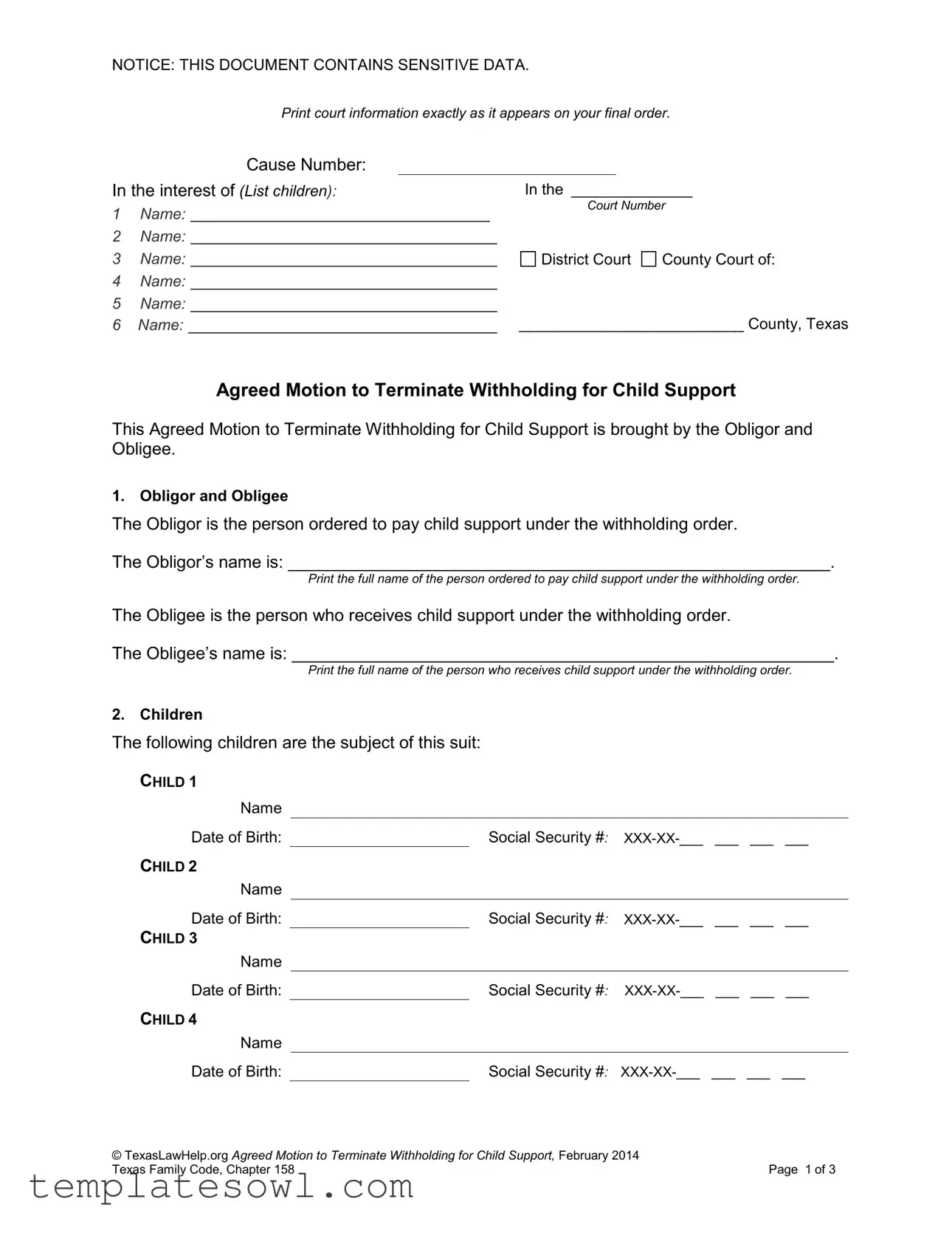What is the Agreed Motion to Terminate Child Support form?
The Agreed Motion to Terminate Child Support form is a legal document used to request the court to end an existing child support withholding order. This form is typically filled out by the Obligor (the person paying child support) and the Obligee (the person receiving child support) and must include specific information about the children involved, reasons for the termination, and must be notarized before submission to the court.
Who should complete the form?
The form should be completed by both the Obligor and Obligee. The Obligor is the party responsible for making child support payments, while the Obligee is the party who receives these payments. Both parties must agree to the termination of child support for the motion to proceed.
What information is required on the form?
The form requires detailed information including the names of the children involved, their dates of birth, and their Social Security numbers (partially obscured for privacy). It also requires the names of the Obligor and Obligee, as well as information related to the original withholding order such as the date it was signed and the court in which it was issued.
What reasons can be checked for terminating the order?
Several reasons may justify the termination of a withholding order. These reasons include the child reaching the age of 18, marriage of the child, the death of the child, active military duty of the child, removal of a child’s disabilities, modification of previous court orders, or the termination of the parent-child relationship based on genetic testing results. All applicable reasons should be checked on the form.
Is notarization necessary for this form?
Yes, notarization is a critical step in the process. Both the Obligor and Obligee must sign the form in front of a notary public. This ensures the authenticity of their signatures and confirms that both parties are in agreement regarding the motion to terminate child support.
What happens after submitting the form?
After submitting the Agreed Motion to Terminate Child Support form to the appropriate court, a hearing may be scheduled. During the hearing, the court will review the motion and the reasons provided. If the court approves the motion, the withholding order will be officially terminated, and both parties will be notified of the decision.



 County Court of:
County Court of: